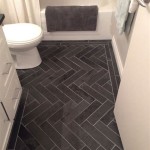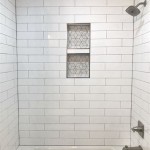How Much to Add a Bathroom in Your Basement: A Comprehensive Cost Guide
Adding a bathroom in a basement can significantly increase a home’s value, improve functionality, and provide added convenience. However, understanding the associated costs is crucial for effective budgeting and project planning. The total expenses can vary widely depending on factors such as the bathroom's size, the complexity of plumbing and electrical work, the quality of materials used, and geographical location. This article provides a detailed breakdown of the costs involved in adding a basement bathroom, offering guidance to homeowners considering this valuable home improvement.
Understanding the Key Cost Factors
Several factors contribute substantially to the overall cost of adding a bathroom in a basement. These involve the scope of the project and the choices homeowners make along the way. A thorough understanding of these factors is essential for generating an accurate cost estimate and avoiding unexpected expenses.
Plumbing: Plumbing is typically the most significant cost driver in a basement bathroom project. Connecting the new bathroom to the existing main plumbing lines can be complex, especially if the basement floor needs to be broken to install new pipes. The need for a sewage ejector system is a common consideration, as basements are often below the level of the main sewer line. The cost of plumbing will vary based on the distance to existing drain lines, the complexity of running new lines, and whether or not a sewage ejector pump is necessary.
Electrical Work: Basements often require additional electrical work to accommodate the new bathroom's lighting, ventilation, and outlets. This may include running new circuits, upgrading the electrical panel, and ensuring compliance with local electrical codes. The cost of electrical work depends on the extent of the required wiring, the need for new outlets and light fixtures, and the cost of hiring a licensed electrician.
Framing and Drywall: Creating the physical structure of the bathroom, including framing the walls and installing drywall, contributes to the overall cost. This involves constructing the bathroom's perimeter, framing the door and window openings, and ensuring the walls are properly insulated and soundproofed. The cost depends on the size and layout of the bathroom, the type of framing materials used, and the complexity of the design.
Fixtures and Materials: The choice of fixtures and materials, such as the toilet, sink, shower or tub, flooring, and vanity, significantly impacts the total cost. High-end fixtures and materials increase the expense considerably. The cost varies widely depending on the brand, quality, and features of the chosen fixtures and materials. Selecting durable, water-resistant materials suitable for a basement environment is crucial.
Labor Costs: Labor costs make up a substantial portion of the total budget. Hiring licensed plumbers, electricians, and general contractors can be expensive, but it ensures the work is done correctly and in compliance with local codes. The cost of labor will depend on the experience and reputation of the contractors, the complexity of the project, and the prevailing labor rates in the area.
Permits and Inspections: Obtaining the necessary permits and undergoing inspections are essential for ensuring the project meets local building codes and regulations. Permit fees and inspection costs vary depending on the location and the scope of the project. Ignoring these requirements can result in fines and delays.
Contingency Costs: Unexpected issues can arise during a basement renovation project, such as hidden plumbing or electrical problems, structural issues, or unforeseen damage. Setting aside a contingency fund of 10-15% of the total budget helps cover these unexpected expenses and prevents the project from derailing. A contingency fund is a prudent measure for any renovation project, especially in older homes.
Typical Cost Breakdown of a Basement Bathroom Project
To provide a clearer understanding of potential costs, a typical cost breakdown for a basement bathroom project can be useful. These figures are estimates, and actual costs may vary depending on the specific circumstances of each project. The figures presented assume a moderate-sized bathroom (approximately 5 ft x 8 ft) with standard fixtures and finishes.
Plumbing: $3,000 - $8,000. This cost includes running new water lines, installing drain lines, and potentially installing a sewage ejector system if gravity drainage is not feasible. The presence of existing plumbing access points will lower the cost.
Electrical Work: $1,500 - $4,000. This covers the cost of running new electrical circuits, installing outlets and light fixtures, and upgrading the electrical panel if necessary. Compliance with local electrical codes is essential.
Framing and Drywall: $1,000 - $3,000. This includes the cost of framing the walls, installing insulation, and hanging drywall. The cost will vary depending on the size of the bathroom and the complexity of the design.
Fixtures and Materials: $2,000 - $7,000. This covers the cost of the toilet, sink, shower or tub, vanity, flooring, and other materials. The choice of high-end fixtures and materials will significantly increase this cost.
Labor Costs: $3,000 - $10,000. This includes the cost of hiring licensed plumbers, electricians, and general contractors. Labor costs will vary depending on the experience and reputation of the contractors. The lower end of this range might be achievable with some DIY work on simpler tasks, but professional help is always recommended for electrical and plumbing.
Permits and Inspections: $200 - $800. This covers the cost of obtaining the necessary permits and undergoing inspections. Permit fees vary depending on the location and the scope of the project.
Contingency Costs: 10-15% of the Total Project Cost. This covers unexpected issues that may arise during the renovation project. Having a contingency fund helps prevent cost overruns and delays.
Total Estimated Cost: $10,700 - $32,800. This range represents the total estimated cost of adding a bathroom in a basement, considering the various cost factors discussed above. The specific cost will depend on the individual project's requirements and the choices made by the homeowner.
Cost-Saving Strategies for Your Basement Bathroom Project
While adding a bathroom in a basement can be a significant investment, there are several strategies homeowners can employ to reduce costs without compromising quality or functionality.
Careful Planning and Design: A well-thought-out plan can prevent costly mistakes and ensure efficient use of materials and labor. Spend time researching different designs, layouts, and fixtures to find options that meet your needs and budget. Consider the placement of existing plumbing and electrical lines to minimize the amount of new work required.
DIY Work (with Limitations): Performing some of the less complex tasks, such as painting, tiling, or installing simple fixtures, can help reduce labor costs. However, it is crucial to have the necessary skills and knowledge to avoid making mistakes that could be costly to fix. Always hire licensed professionals for plumbing and electrical work to ensure safety and compliance with local codes. Improperly installed plumbing or electrical wiring can lead to serious problems, including leaks, fires, and electrical shocks.
Shop Around for Fixtures and Materials: Compare prices from different suppliers and retailers to find the best deals on fixtures and materials. Consider purchasing discontinued or slightly imperfect items at a discounted price. Look for sales and promotions, and be willing to shop online as well as in local stores. However, balance cost savings with quality and durability, as cheaper materials may not last as long or perform as well.
Consider a Simpler Design: A simpler design with fewer custom features can help reduce both material and labor costs. Opting for a basic shower instead of a custom-tiled shower enclosure, or choosing a standard vanity instead of a custom-built cabinet, can save a significant amount of money. Focus on functionality and practicality rather than elaborate design elements that add to the expense.
Maximize Existing Plumbing: If possible, locate the new bathroom near existing plumbing lines to minimize the amount of new piping required. This can significantly reduce plumbing costs, as it avoids the need to break through concrete floors or run new lines over long distances. Consider using the same wall as an existing bathroom on the floor above to tap into the plumbing more easily.
Get Multiple Quotes: Obtain quotes from several contractors before making a hiring decision. Compare the quotes carefully, paying attention to the scope of work, materials included, and labor costs. Be wary of quotes that are significantly lower than others, as this may indicate substandard work or hidden costs. Choose a contractor who is licensed, insured, and has a good reputation.
Consider Alternative Flooring Options: While ceramic tile is a popular choice for bathroom flooring, it can be expensive to install. Consider alternative options, such as luxury vinyl tile (LVT) or sheet vinyl, which are more affordable and easier to install. These materials are also waterproof and durable, making them suitable for a basement environment.
Avoid Moving Walls: Moving walls or altering the existing layout of the basement can add significantly to the cost of the project. Work within the existing structure as much as possible to minimize the need for demolition and reconstruction. A creative design can often incorporate the existing walls and features of the basement into the new bathroom.
Adding a bathroom in a basement is a significant undertaking, but with careful planning, realistic budgeting, and smart cost-saving strategies, homeowners can enhance their living space without breaking the bank. The key is to understand the various cost factors, prioritize essential features, and make informed decisions throughout the project. A well-executed basement bathroom can add value, convenience, and comfort to any home.

Cost To Add A Basement Bathroom Bright Green Door

How Much Does It Cost To Add A Bathroom In The Basement

Adding A Bathroom To Basement Pros Cons Costs

Cost To Add A Basement Bathroom Bright Green Door

Cost To Add A Basement Bathroom Bright Green Door

How To Diy Bathroom In Basement Without Breaking Concrete

Cost To Add A Bathroom 2024 Guide Forbes Home
How To Plumb A Basement Bathroom Diy Family Handyman

Cost To Add A Basement Bathroom Bright Green Door

How Much Value Does A Basement Bathroom Add Bedrock Construction Calgary







